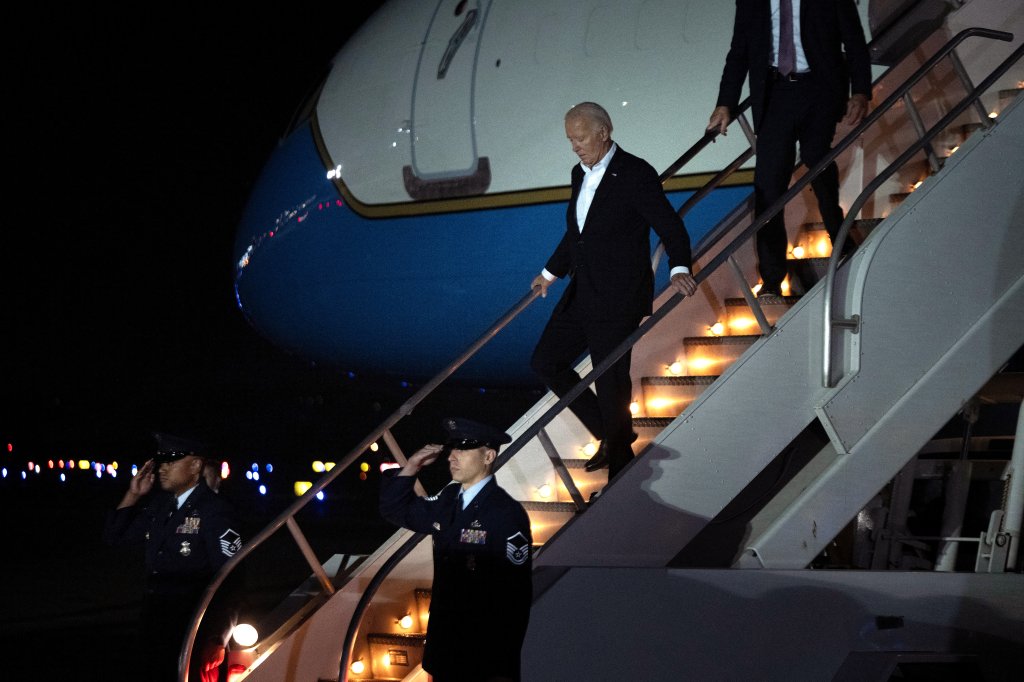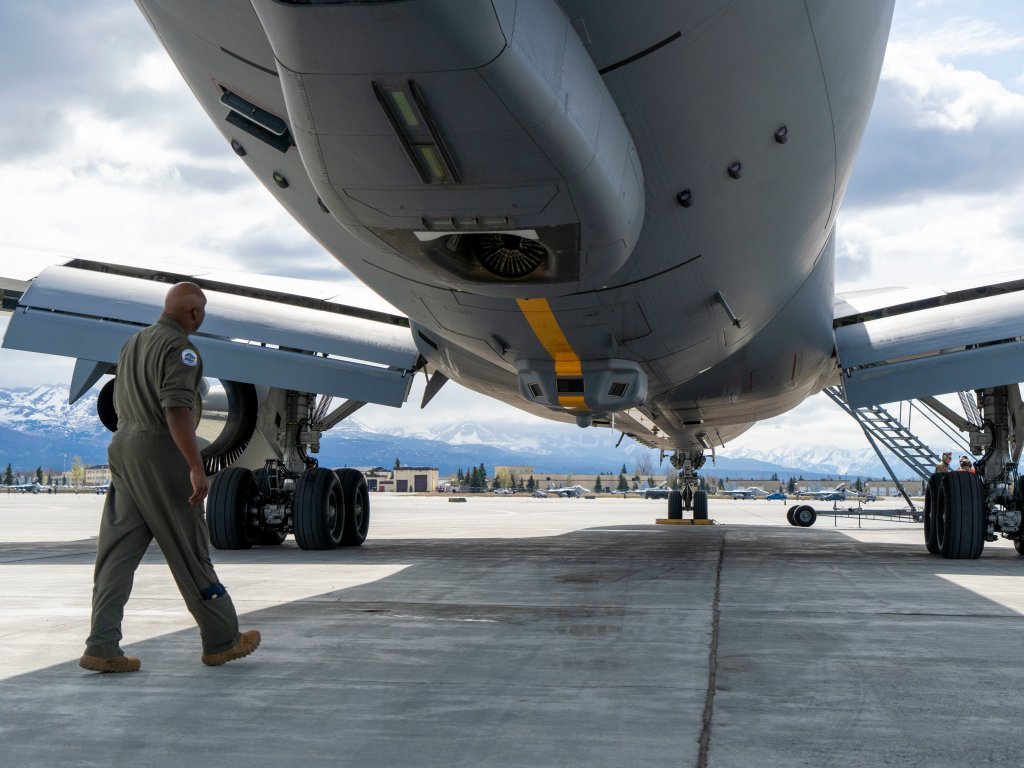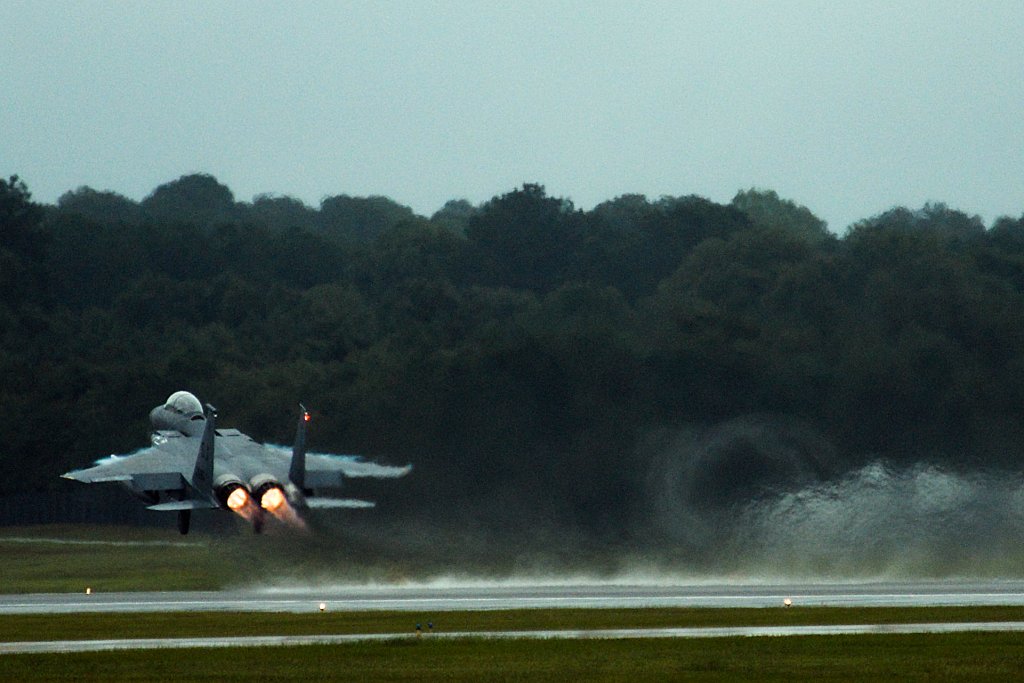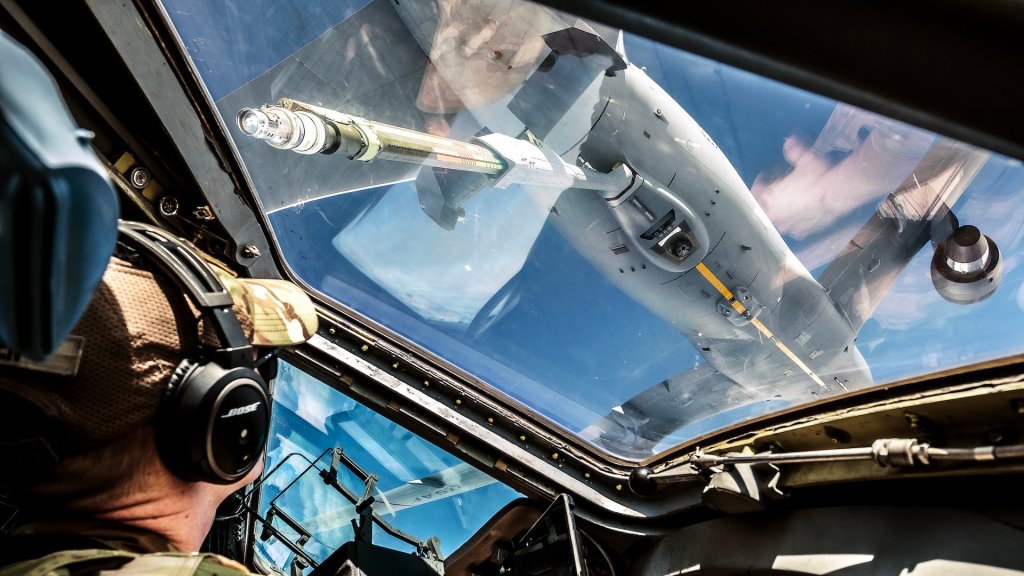A U.S. Air Force KC-46A Pegasus tanker that was involved in a refueling mishap off the coast of California on Wednesday was helping to enforce a temporary flight restriction related to a presidential visit, it has emerged. Also involved were a pair of F-15E Strike Eagles, armed with live missiles. The tanker and one of the fighters were forced to make emergency landings — the F-15E twice having to abort those recoveries before finally touching down at an alternative location. The incident comes as problems still dog the KC-46’s troubled path to full operational capability.
You can listen to the relevant communications between some of the crew aboard the aircraft and air traffic control in the files embedded in the tweet below, posted to X by our friend @thenewarea51.
The KC-46 involved in the mishap was from the 931st Air Refueling Wing at McConnell Air Force Base, Kansas, but was operating out of Travis Air Force Base, California, and was using the callsign WIDE12. It was refueling two F-15Es from Mountain Home Air Force Base, Idaho, and reportedly assigned to the 391st Fighter Squadron.
The fighters were callsigns NOBLE41 and NOBLE42. On this occasion, the F-15Es were reportedly helping enforce temporary flight restrictions related to a presidential visit. As we have discussed before, homeland defense during presidential visits is very resource intensive, with different assets being pulled from around the country to fulfill the high-stakes vital mission.
As of August 21, when the mishap occurred, President Joe Biden was reportedly vacationing in Santa Ynez, California.

Based on the mission profile, the F-15Es would have been carrying AIM-120 AMRAAM and AIM-9 Sidewinder series air-to-air weapons, as well as 20mm cannon rounds.
WIDE12 and NOBLE42 both sustained damage while the fighter was taking on fuel from the tanker, although the exact nature of how that incident unfolded is unclear at this stage.
However, thanks to the audio, we do know that NOBLE41’s crew communicated via radio to air traffic control informing them that NOBLE42 had suffered some kind of issue with its hydraulic system. The radio communications also include WIDE12 confirming hydraulic problems of its own and declaring an inflight emergency. At one point in the communications, a reference is made to the boom on the KC-46 having “fallen off.”

As a result of the incident, the KC-46 returned to Travis Air Force Base for an emergency landing, having requested “a firefighting capability and probably a towtruck.”
The 931st Air Refueling Wing subsequently confirmed that the aircraft had lost a “portion” of its boom close to the base and then landed with what was left of the boom still lowered. The wing added that no one was injured during the incident.
That would appear to be supported by unofficial photos that appeared on Facebook purportedly show damage to the KC-46. In these photos, the boom itself is seen sheared off, the remaining part dragging on the runway, while there are also signs of impacts on the tip of the tail cone. So far, the authenticity of these photos has not been confirmed by the Air Force.
In a statement, the 60th Air Mobility Wing confirmed that the Travis runway had been temporarily closed as a result of the incident.
As for the F-15E, NOBLE42, the air traffic control communications indicate that it diverted to Fresno, California, where it, too, made an emergency landing. The crew of the Strike Eagle confirm that, while armed with live missiles, these are not “hung” — meaning that no attempt had been made to launch them.
The problems didn’t end there, however, since the arresting cable reportedly broke during the Strike Eagle’s first attempt at landing. A second attempt, made on the opposite of the runway, also ended in failure, with the arrester hook failing to catch the cable. Another diversion was then made to Naval Air Station Lemoore, where a safe recovery was achieved.

An investigation is now underway to understand the cause of the mishap and to fully assess the damage to the KC-46 and the F-15E.
Notably, this is not the first time in recent months that a KC-46 has had a mishap involving its refueling boom.
In June this year, another KC-46 from the 931st Air Refueling Wing was damaged while refueling a U.S. Air Force F-16 in Dutch airspace. On that occasion, air traffic control communications described damage to the refueling door on the fighter after a “too-close breakaway incident.” The crew aboard the KC-46 said that the tanker was “damaged and unable to refuel.” An investigation into this mishap is also ongoing.
Back in October 2022, there was another refueling accident involving a KC-46 and an F-15. Unconfirmed photos posted on social media showed the tanker’s damaged boom and tail cone. In another incident the same year, a KC-46 conducting a flight with a congressional delegation on board made an emergency landing with the boom dangling below the aircraft, as you can read about here.
Before that, in 2020, The War Zone examined a video showing an apparent close-call incident involving a KC-46 and a test F-15E. In this footage, the boom appears to slip off the Strike Eagle’s refueling receptacle, with its control surfaces nearly banging into the fighter’s canopy. Exactly when this incident happened is not clear, but Boeing confirmed that the boom did not make contact with the canopy of the Strike Eagle.
Fast forward to 2024 and Boeing and the Air Force are still working through various issues on the KC-46, some of which relate to the refueling system.
Notably, efforts are still ongoing to fix long-standing and serious problems with not only the KC-46’s boom but also the Remote Vision System that boom operators use to guide it into receiving aircraft.
Boeing is currently under contract to address issues with stiffness in the boom on the KC-46, a fix that involves hardware and software changes. As for the Remote Vision System, or RVS, the contractor is integrating an entirely new version of this into the tanker. The decision was taken after multiple problems with the original RVS, which was found to be potentially dangerous to use as well as potentially risking making boom operators physically ill.

In previous Air Force tankers, the boom operator occupied a position from at the rear of the aircraft, while the KC-46 does away with this and instead has them work from the main cabin. Using the RVS, the boom operator steers the boom into the receiving aircraft aided by video feeds from an array of video cameras at the rear of the aircraft. Special glasses provide the boom operator with feeds presented in a hybrid 2D/3D format — at least, in theory. However, with the original RVS not working as intended, notably in direct sunlight, KC-46 boom operators have had to use a variety of workarounds to ensure that receiver aircraft can be ‘gassed up.’
The RVS 2.0 is not now expected to be delivered until April 2026.
Despite this, the Air Force has continued to introduce the KC-46 to service, in the process of phasing out the KC-10A Extender, the last remaining examples of which are planned to be decommissioned next month. The new tanker has also chalked up some significant achievements, including conducting operations from austere airstrips, while the Air Force is also examining options for operating the KC-46 with just two individuals on board — a pilot and a boom operator — in certain high-end wartime scenarios.
Regardless, the KC-46’s complicated development and many and varied teething troubles mean that an incident like that which occurred off the California coast earlier this week — whatever the reason for it — isn’t a good optics for the USAF’s new newest tanker.
We have reached out to the Air Force for more details about exactly what happened.
Contact the author: thomas@thewarzone.com
